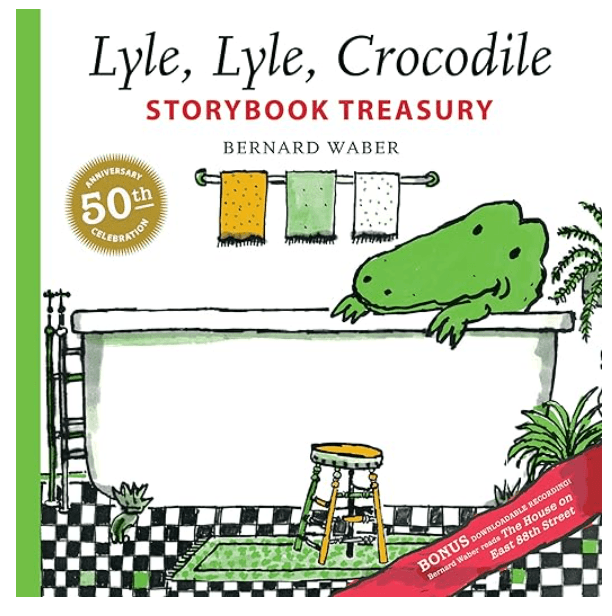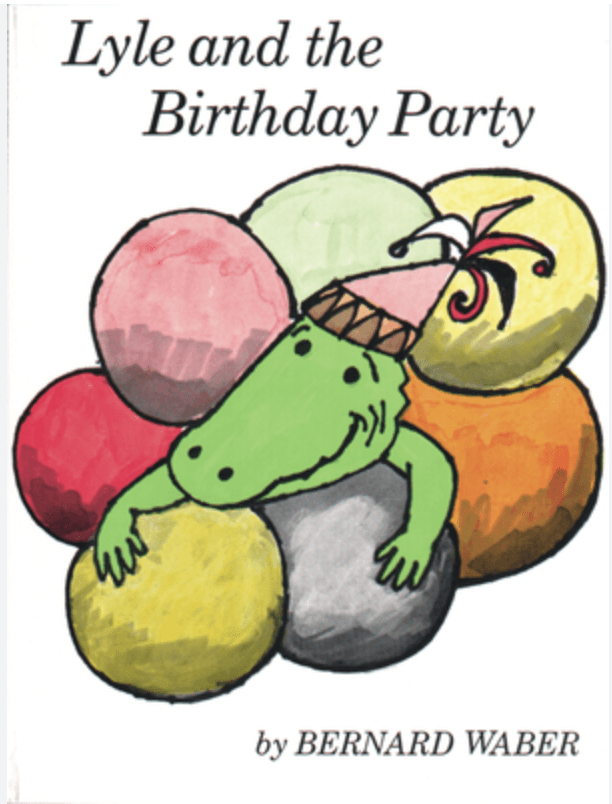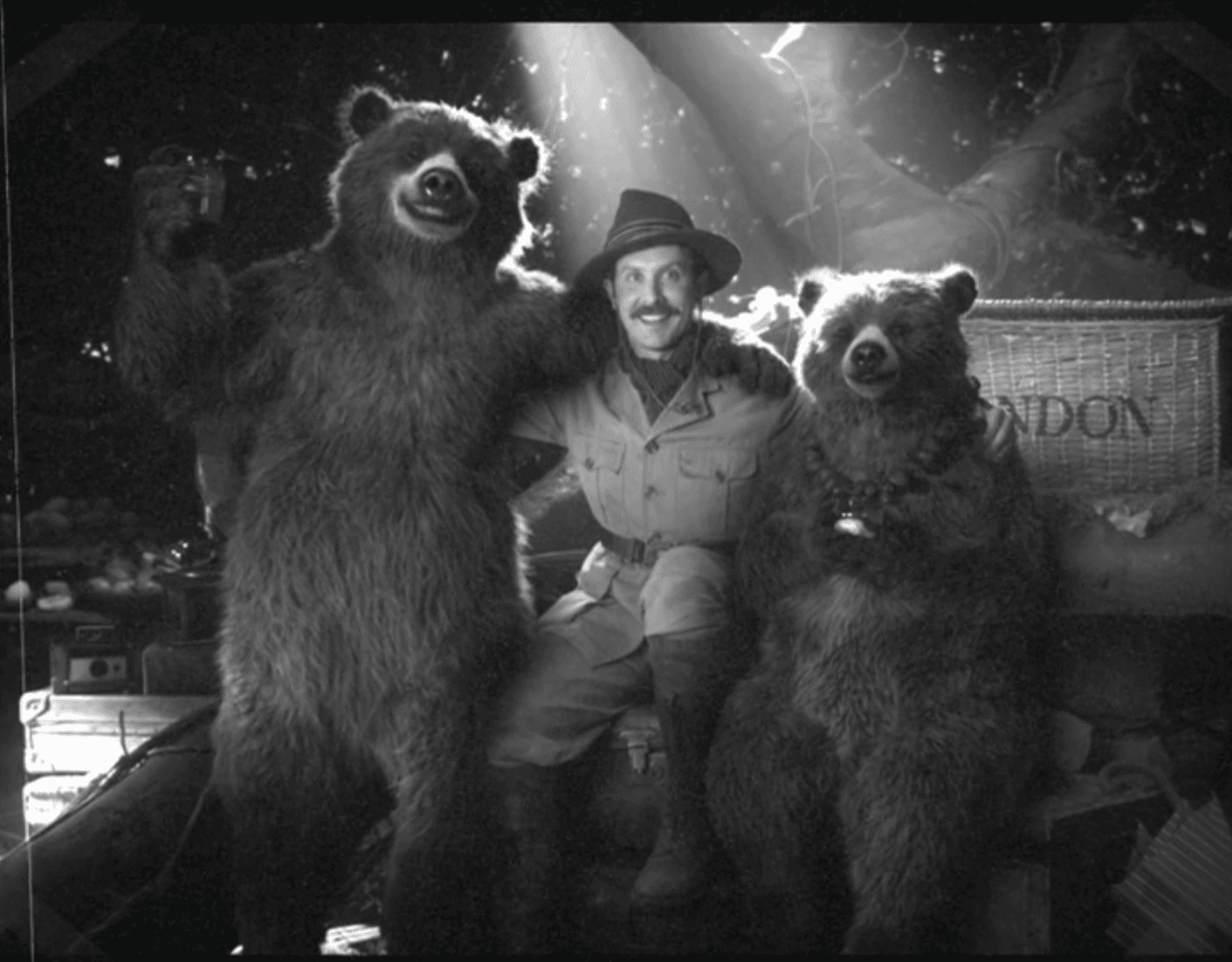A Brief Treatise on Paddington Bear: The Next Step in Animal Evolution, or Unprecedented Mass Delusion?
By Dr. Bond Bakerloo, PhD, Her Majesty’s School of Animal Studies, London, England
Introduction
When the strange and unnatural case of Paddington Bear came to my attention, I saw it as a troubling next step in the long, entangled history of humans and animals. Long had humankind domesticated animal companions, used them as protectors, raised them as livestock, and brought them into their homes as beloved pets. But the notorious Brown family of Windsor Gardens attempted to turn their pet, Paddington (Ursus marmaladus), into something else altogether: their very own child, one they kept in an unfit home and repeatedly forced to commit acts of derring-do totally unsuited for a young bear cub. Stripped from his natural parents and brought to the inhospitable environs of foggy London, Paddington became the latest victim in well-meaning but deluded human attempts to entwine our respective species in ways that defy the laws of nature. The case of Paddington is truly heartbreaking for anyone who respects the right of animals to be animals, not gaudily dolled-up little people.
But Paddington is, alas, not an anomaly. Below, I will explore his predecessors: wild animals turned into not just pets, but unwilling and unhappy children in a state of well-intentioned but horribly misguided domesticity.
A Short History of Animal Delusions: Stuart Little and Lyle the “Crocodile”
The first case of an anthropomorphized animal companion (AAC) that came to our discipline’s attention was Stuart Little, a human in every way but biology (according to his “parents,” at least). Accounts of his parentage differ—according to some, he was literally the biological child of his guardians, Frederick and Eleanor Little, while a more reputable account states that he was adopted from an orphanage otherwise populated by human children. What drew the Littles to a mouse rather than those children—who had, evidently, turned him into a pet that they dressed in doll clothes—remains a matter of speculation. The most credible theories hypothesize that the Littles projected their own values on a mouse in a way that they couldn’t with a human child, with his or her own traumas and off-putting habits. The Littles’ own accounts of their mouse-child state that he was a precocious reader (and appreciator of Louisa May Alcott in particular—Eleanor’s favorite author) and toy-boat enthusiast (Frederick’s pet passion). Never mind that the teachers at the school where they brought Stuart testified that the mouse could not (or would not) read. (Instead, he was used as a classroom pet—against the protests of the Little parents.) The Littles used Stuart to simulate an ideal child, evidently forgetting the one they already had, who followed a dissolute path later in life likely due to the neglect of his musophile parents.
While mice have been kept as pets or playthings—though not children—for centuries, the case of Lyle the alleged crocodile shows that these delusions extend to undomesticated carnivores as well. The adoption of Lyle, another animal taken in by a small, unhappy three-person family in New York City, followed many of the same patterns as Stuart Little’s. While the Primms didn’t go out of their way to take Lyle in—he had been illegally kept in the attic of their Manhattan brownstone before their arrival—rather than alerting the authorities after they discovered him, they used him as a proxy child to ease their transition to the city and heal the fissures forming within their family unit. Inevitably, keeping an alligator in the middle of New York caused havoc and rampant destruction within the home and its wider environs; the Primms’ insurance company dropped their policy after the alligator destroyed the staircase of the home with his comings and goings. Within the children’s stories later published by Bernard Waber, one can sense the truth of an alligator desperate to be set free from his role as a jester for this deeply misguided family; in several illustrations, he almost appears to be drowning, a grimace affixed to his sorry visage.


Eyewitness accounts and a television broadcast attest that the Primm family and Lyle’s previous custodian, Hector Valenti, used the alligator as a kind of puppet for their acts of singing ventriloquism—further proof of how deep their madness ran. Lyle, rather than a member of the family, was, in fact, no more than a stooge for the Primms.
These precedents provide important context for the subject of Paddington Bear. Several trends—adoption by small, well-heeled families; an animal forced into unnatural circumstances and made to display human behaviors; the destruction that inevitably ensued; and the healing of the adoptive family’s unresolved traumas—recur in each case. Are these isolated incidents of delusion, or indication of an incipient new phenomenon? We will explore this question further via the tragic story of Paddington Bear.
The Peculiar Case of Paddington Bear
The origins of Paddington Bear (Ursus marmaladus) can be traced to what his discoverer, Montgomery Clyde, called “darkest Peru”—presumably, the national park surrounding Machu Picchu, although Clyde’s records have been cast into doubt due to his unethical conduct among the local bears. Although his task was simply to study the new species at a distance, instead Clyde attempted to domesticate them, violating the holiest precept of Animal Studies: “Observe, but never intervene.” He named the two bears he came across Lucy and Pastuzo and introduced them to human food, gadgets, and language. According to Clyde’s own telling, “[Pastuzo] guided me through the jungle to show me his world, and in return, I introduced him to ours.”
It is clear from Clyde’s account, and his photographs of the bears, that he taught them human habits like walking on hind legs and wearing jewelry, all so he could use them as substitutes for his human companions, far away in England. Clyde displayed symptoms of a kind of fever dream, perhaps even believing that the bear Lucy was his mother and going so far as to host tea parties with the bears in his makeshift jungle home.

Ursus marmaladus is a gifted mimic (see Pastuzo’s smile above [left], so like Clyde’s own), but as far as I and other scholars can tell, it cannot speak English and certainly does not show the strong desire to visit London and take afternoon tea. Once again, it is clear to any observer with a healthy emotional distance that Clyde attributed human qualities to these bears to satisfy his lack of companionship—thus corrupting the animals’ natural instincts.
We know from Paddington’s red hat, which originated with Clyde (again, see photo above), that the cub was taken in by Lucy and Pastuzo, although they would have been too advanced in age to be his natural parents. We do not know how he reached England; according to the Browns’ telling, they found him lost and abandoned at Paddington Station, where, they claim, thousands of London commuters had somehow overlooked the bear cub. Mary Brown, the matriarch of the family, has said that she took note of him first, and it was also she who insisted on bringing the bear cub home. Mrs. Brown follows a familiar archetype: Like Mrs. Little and Mrs. Primm, she was an educated, upper-middle-class, artistic sort—in this case, a children’s book illustrator—given to sometimes extreme flights of fancy. While Brown’s family resisted Paddington’s adoption, she insisted on the great fun that having a bear as a pet—nay, a child—would bring. It is possible that she, like Clyde, had concocted her own fantasy: that she was living in one of her children’s books, not a real world that follows laws of biology and common sense.
Mary was also clearly suffering from deep repression; her husband, Henry Brown, ruled his family with an iron fist, keeping his wife off motorcycles and confiscating his son’s toy rockets. Rather than rebel in a normal way, by taking a spur-of-the-moment vacation or having a torrid affair, Mary revolted by bringing an agent of chaos into her home to disrupt the order Mr. Brown had so thoroughly enforced.
While the delusion began with Mrs. Brown, however, it soon spread to the rest of her family like a contagion. Paddington gave the Brown children what some might call “clout,” as their classmates clamored for a look at the walking, “talking” bear. Paddington played games with them, allaying the loneliness that had plagued the children due to the sterile environment Mr. Brown had created. But even Mr. Brown eventually joined in on the so-called “fun,” perhaps due to the creep of a midlife crisis and his desperation not to be replaced by a bear cub in his family’s affections.
It of course cannot be ignored that Paddington was in possession of abundant charm. When not using toothbrushes for untold purposes or flooding the Browns’ historic London home, he was, in a word, adorable, particularly when dressed in his red hat and duffle coat. Mr. and Mrs. Brown, doting, overbearing parents to their biological offspring, would have been particularly susceptible to these charms as their children grew older and pushed them away: What was Paddington, really, but a baby who would never grow up?
And there is a kernel of truth to the family’s misguided beliefs that Paddington belonged with them. Paddington did, indeed, adopt some humanlike characteristics: He preferred to walk on two legs and also fixed those who’d offended him with a “hard stare,” a very British way of expressing one’s displeasure. Many animals, when taken from their parents too young, will imitate the habits of their newfound family—let’s not forget orphaned Rocky the squirrel, who purred like a cat after he was adopted by one. Despite the Browns’ beliefs, however, this does not mean that Paddington did the miraculous and bridged human and ursine biology.
Nevertheless, the belief that he was no ordinary bear quickly spread from the Browns to their neighbors, the wider community of London, and even the prison of hardened criminals where Paddington was briefly held.
Mass Delusion: Not Such a Bad Thing After All?
Like a team mascot, Paddington had a curious way of rallying those under his spell. In his neighborhood of Windsor Gardens, his many “friends” credited him with teaching them politeness and life skills—they even gave him a motto: “If we’re kind and polite, the world will be right.” Even more remarkably, at the prison where he was wrongly sentenced, Paddington brought a previously unimagined peace among the inmates and was credited with revolutionizing the execrable cooking program with his marmalade recipe.
So if their delusions did so much good, what was the harm in believing Paddington was simply a diminutive, furry person? First, we can point to the personal and property damage he caused. Like a circus bear in a tutu, Paddington was paraded about as a barber, dog groomer, window washer, and—during his prison stint—laundryman and cook. The great fun of a bear giving a Great Dane a bath was washed away by the dog’s vet bills, and by the thousands in damage Paddington also caused to lavatories, windows, hairdos, prison uniforms, and trains. The Browns did not wish to stamp out Paddington’s sense of individuality and verve by leashing or confining him; all well and good for their own home, which he flooded and set on fire in a matter of days, but what of the A1 Peppercorn Pacific 60163 steam engine that ended up in a river as the result of his exploits? What of the historically significant Mr. Gruber’s Antique Shop, whose priceless wares he sullied with marmalade?
We can also point to the damage caused to the animal himself, who was taken out of the lush jungles of Peru, away from his adopted parents, to sleep in a children’s twin bed in an attic (and then a cot in prison!) and subsist solely on marmalade sandwiches and the occasional cup of tea. Through his time in London, he had no contact with bearkind and was used as a kind of emotional support animal (and even indentured servant) by the Browns and the city at large. As if that weren’t enough, Paddington was constantly put in near-death situations by the Browns, traversing London rooftops and getting stuck on runaway trains in their elaborate games of make-believe.
Paddington has long been used in service of his human captors and companions. The Browns say he completed their family, and his neighbors say he helped them find love, meaning, and their house keys. But at what cost? Everyone loves Paddington, but how does Paddington feel? It’s too bad we can’t ask him.
Conclusions and Action Items
The middle-class idleness and fancies of families like the Littles, Primms, and Browns have transmogrified the natural order of human-animal relations. It is clear that the Littles, Primms, and Browns hoped to solve their own problems via their adopted animals. Family therapy, and perhaps institutionalization, would have been a more appropriate course, and when delusions like these are observed again, it should be greatly encouraged. Rather than allow families like these to find loopholes to retain their so-called children, we must make every effort necessary to strip them of their animal captives and return those captives to their natural habitats—or to properly credentialed rescue organizations. The future well-being of animalkind may just depend on it. Paddington depends on it.
